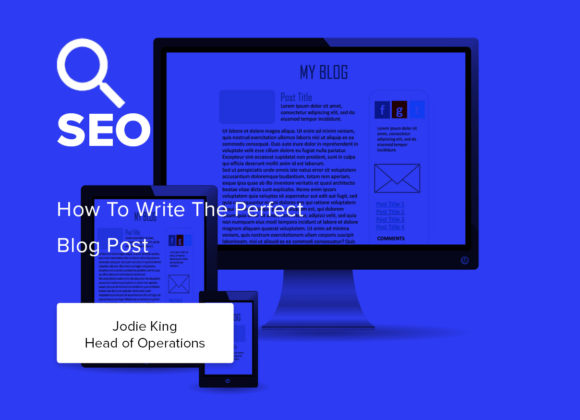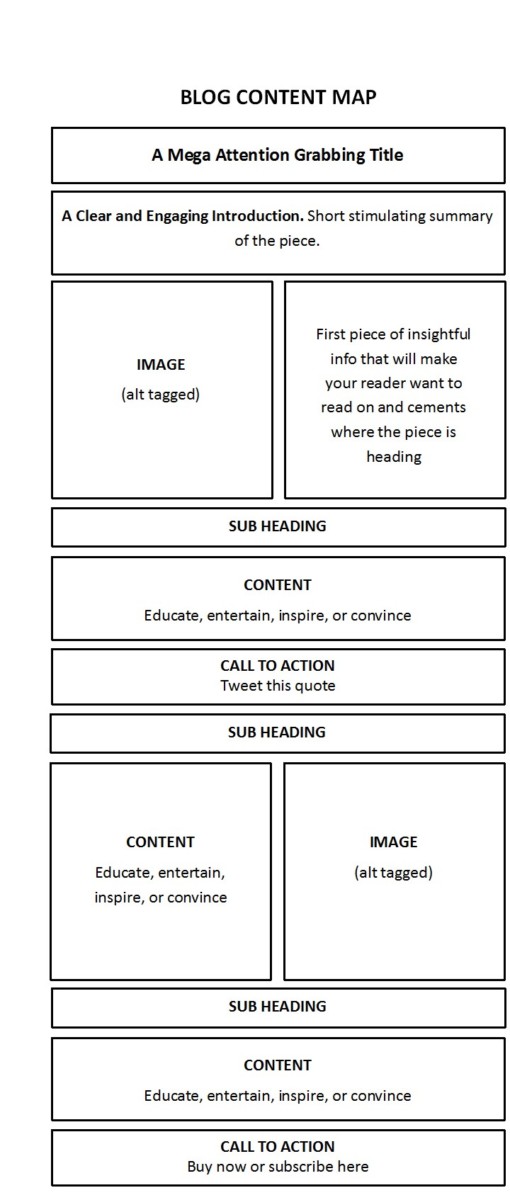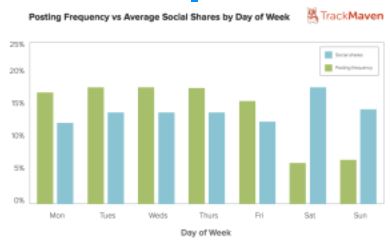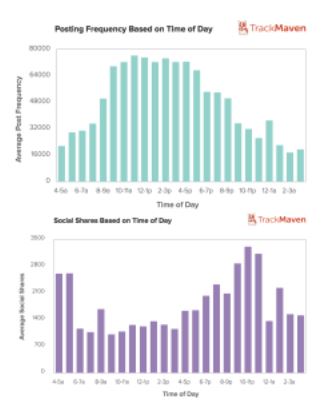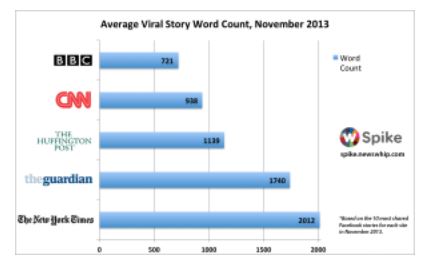The perfect blog is not produced by a creative genius trapped in a state of enlightenment. Having said that, it also is not the result of certain ingredients mixed the same way each time.
Yes, there are key elements that need to be optimised. Yes, there is a science behind the perfect blog. And, yes there is a touch of creative flare involved in those that are shared far and wide. But, ultimately, anyone can write a stellar blog piece. You just have to have a sound idea, a sound structure, and a killer intro.
This is exactly how it is done.
Competitor Analysis
The first place to start writing your perfect blog is to see what your competitors have been producing. Look at:
- The headlines they have used
- The content they have chosen
- The number of shares and likes each post has received
This information will tell you areas that get serious traction so that you can write a bigger and better piece on that subject matter. It will also show you what audience your competition is targeting and whether they are chasing a niche or targeting the same crowd you are.
This is all valuable information. You do not have to be at odds with your competition. If they are writing material for a particular niche you could share this and hope to build a relationship that will see your work shared by them in the future.
You should conclude your competitor analysis with an idea of what topics would be a strong base for your perfect blog. SEM Rush is a great tool to use for competitor research.
Keyword Research
Keyword analysis is always a good idea. There is no point writing the perfect blog post around the word SEO for instance. You have to cut a niche into your subject matter, link to something trending, or blow people’s minds with some truly original content. Chances are though that someone will have been there before you no matter how much creative genius you have brimming up inside of you.
A good way to compare your ideas to those that have done extremely well socially is to open a free Buzzsumo account. Buzzsumo takes a keyword and shows you what posts containing it have gone viral. This gives you a good idea of what users want from their content and will help you create a post from that angle.
Adwords Keyword Planner and SEM Rush are the tools we use to research keywords so we know exactly how much traction they could potentially pull. However, it is important to note that you should not change the structure of the message to suit your keyword analysis. Yes, bare it in mind and try to gravitate towards keywords that will help your post rank but if you are promoting it via social media this is not paramount. The pull of the piece can overcome keyword disadvantages if it is written well and put in front of the right audiences.
!Cannibalisation Warning!
The most common mistake we see from blog creators is that they use the same keywords and key phrases they are wanting their core landing pages to rank for. So someone who specialises in payroll services and has a landing page all about ‘payroll services’ cannot write a blog called – ‘Our leading guide on payroll services’.
That blog will then compete with their landing page and instead of boosting your rankings you will just dilute the traction of both pages. Google will not know which one to choose so it will rank them both at the bottom of page two. It is like gearing up two boxers to fight out of the same corner! You cannot reach the competitors because your pages are too busy fighting amongst themselves.
So just to be clear. The keywords you choose for your blog need to be long tail so they have a hope of ranking and so that they do not deflect SEO strength from your core pages. If you are an eCommerce store wanting to write a blog about your top category – Gaming computers – then you could break the keyword used down like this so that it didn’t compete with your landing pages:
- Computers for gamers
- Top brand gaming PCs
- Gaming setups that will enhance your play
‘20 Top Selling Computers for Gamers’ would be an ideal title to make sure it still have oomph about it.
Do not cannibalise your site or you will lose key rankings.
Semantic Phrases
A new wave of keyword research involves semantic meaning. This is how Google reads that page and what keywords it associates with others. If you have a page on trainers then it might expect to see the terms; Nike, Adidas, cushioned, runners, material etc.
This is what users associate with those keywords. It means the page sounds natural and is not keyword stuffed. The meaning of the page is coherent and easy to digest.
Using Semantic phrases in your content allows it to flow naturally as well as getting popular search terms in. The keyword research for a blog should include extensive research around that word once you have it. These are the tools that help pad out the meaning of a keyword and build a page’s authority into a vast area. Because one word stands for a hell of a lot more than just a signpost to Google.
- LSI Graph – https://lsigraph.com/
- Answer The Public – https://answerthepublic.com/
- Keywords Everywhere – https://keywordseverywhere.com/
LSI Graph and Answer The Public are used for finding the phrases and questions that people are searching for. If you then copy and paste them into Keywords Everywhere you will see the search volume for each phrase and can tailor it to a UK audience.
Now you are writing a blog about what people are looking for and you have a natural and well-structured blog that talks around the subject, differentiating itself as a really authoritative piece.
The Layout
Now that your blog post has been thoroughly researched it is time to plot your layout. It sounds strange but often if you plan out what you want your blog post to look like before you start putting it together, you will have an overview of the big picture.
Think about what it is that you want to achieve with the finishing article and then work back to each strand in meticulous detail. Here is an overview of what we include:
- Images
- Heading
- Sub-headings
- Calls to Action
- Introduction/Summary
Depending on your content will depend on how many subheadings, headings and images you use in your blog but as long as they are relevant then it doesn’t really matter how many there are.
The perfect blog will be made up of lots of segments (bite-size chunks) of information. Sub-headings are great for readers that only want to read one section of the blog. The more accessible the piece the more likely people will read all of it and share it.
Headline/ Title
The ideal length of a headline is six words. These six words are the most important ones you will write because it will determine whether your audience clicks on the link or not. All your hard work will be for nothing if they do not leap over that first hurdle! Here are some of ours as examples:
HOW TO IMPROVE THE QUALITY SCORE IN ADWORDS
ARE YOUR PRODUCT PAGES KILLING YOUR WEBSITE?
HOW CAN AUTOMATION HELP MY GOOGLE SHOPPING CAMPAIGNS
It is not always easy to produce a concise title that says everything you need it to say and many of ours go over the ideal six word headings. The reader will entertain more words but they still need to be snappy, catchy titles that grab your audience’s attention and get to the point without hesitation or waffle.
Your subheadings then need to be in the right font and size to attract attention and break up your blog post into bite-chunks of accessible information. Here is our guide for optimal heading fonts/sizing:
- H1: post / page title
- H2′s and H3′s: Subheadings
- H4: Your blog’s name and possible widget placements
- H5: same as above: sidebars etc.
I sometimes use H4 for sub-sub headings or list titles. There is no fixed rule just make the piece aesthetically pleasing and functional.
Hook them
It goes without saying that once someone has clicked on your link their attention needs to be captured by your introduction instantly. They need a reason for staying. The hook is usually delivered via a storyteller format because that is what people like. They don’t want to be sold to, jargon filled language will be a huge turn off and too much hype will have them leaving in their droves. People like an honest humanised introduction that tells them what they are going to find out about in a straight talking, energetic, and entertaining way.
Just keep thinking: have I hooked them? If I landed on this page would I want to stay and read more?
When to post your blog
TrackMaven analysed over 4,600 blogs and 1.2 million blog posts in order to find out what trends in terms of social sharing. They produced a huge report that highlighted scheduling opportunities that could get your blog seen by more of its intended audience.
This graph shows that because there are fewer posts on Saturdays and Sundays their share potential is much higher. This is still a somewhat overlooked opportunity and since business owners regularly take their work home for the weekend it might be an idea to schedule a post too. That way you can monitor your social media on a mobile device and potentially engage with a captive audience.
These graphs draw attention to the fact that many of us are posting blog pieces at times when people are not hitting social media. The peaks and troughs show far more activity before the official work day starts in the early morning and after it finishes in the evening.
Word Length
NewsWhip studied the top 10 most shared stories on Facebook and found, with the exception of the BBC posts at 721 words and CNN posts at 938 words, most of the posts were over 1000 words long.
Long posts notably perform better than short posts for these reasons:
- Demonstrate that you know your subject area in depth and are not just summarising someone else’s
- More fresh content for Google to scan and feed into searches
- Builds an in–depth catalogue of information on your content hub establishing you as an expert within your field
The Finishing Touches
The perfect blog post has to have, and I mean has to have:
- Images
- Sound bites
The images break up the text and make it look inviting. The sound bites give them something to share with others so they also look knowledgeable through association. I am not going to write tons on these because we all know the importance of images and calls to action. Your post has to have something great to look at whether that is a graph, an infographic or an image. It also has to have something readers can take away from it.
If you want them to buy something you have to put that in front of them. If you want them to subscribe to something you have to put the link for them to subscribe to it on there. Make the calls to action visible and inviting.
Promoting Your Blog
It is so important to remember that once you have posted your blog, it doesn’t finish there. You then need to make sure you are sharing it everywhere to get maximum traction.
Social media is the best place to share your blog. You have to work with a paid budget if you hope to get serious traction. However, if you have a large following on your social media platforms then organically can work just as well – it depends how engaged they are. It is rare to see a campaign going strongly without a budget and without a tailored audience so you can target the people you know need to see your blog.
Remember, to include a catchy caption with a high quality image.
There are many different things that you can do with your blog once you have created it; turn it into a video, PDF even an infographic – It is all about experimenting and finding the right method that works for you and your business.
So now you have all you need to know to write the perfect blog. Think about it over and over again. Proof read it over and over again. Then when you have checked it is all ticking the right boxes – publish that blog and push push push. There is no point writing superb content if you are not going to spend time getting it in front of the right people!
